UAV "Sirius-PVO": hunter of air attack weapons
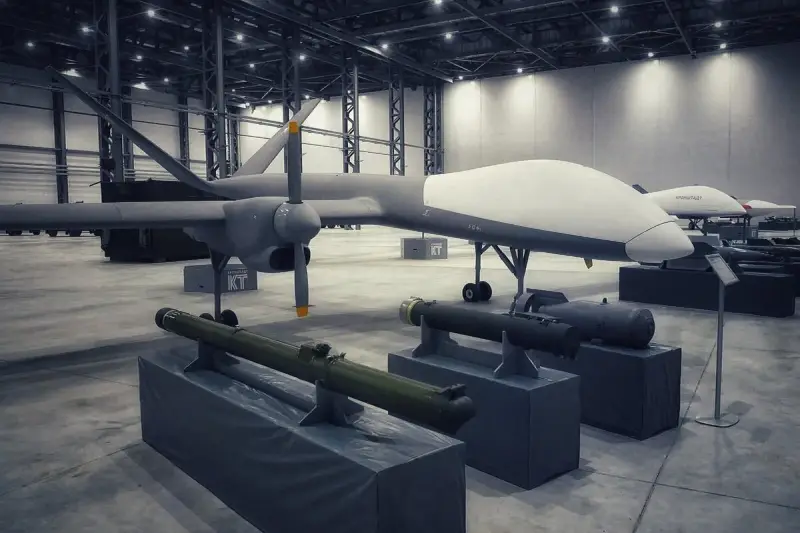
UAV "Sirius". Image by Project SFERA Live
From detection to destruction
As part of solving the problem of combating low-flying air attack weapons (LAW), in particular, Ukrainian cruise missiles (CR) and unmanned aerial vehicles (UAVs) - long-range kamikazes, in the material “Waiting for the Helios-RLD UAV: for protection against low-flying air attack weapons” We examined a method for constructing a spatially distributed, dynamically changing air defense network that provides detection of low-flying air attack weapons, tens of kilometers deep and extending along the entire line of combat contact.
As the title of the article suggests, for this purpose long-range radar detection UAVs (AWACS) should be used, in particular, the Helios-RLD UAV planned for development by the Kronstadt group (RLD - radar patrol).
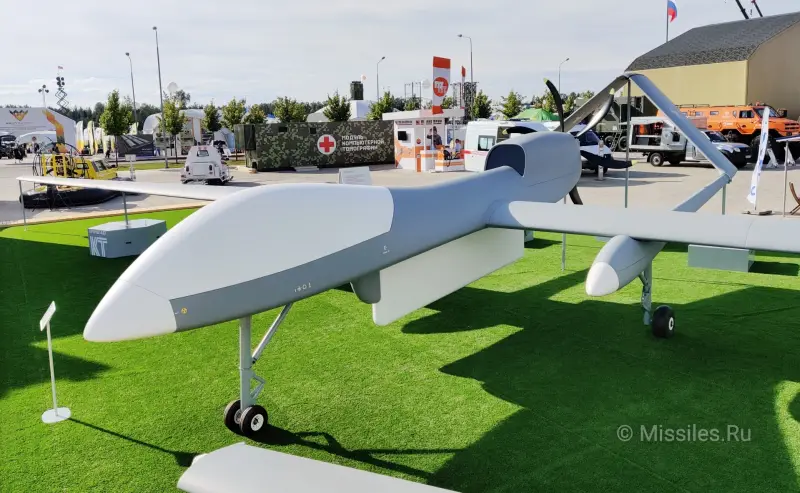
UAV "Helios-RLD"
Of course, it is necessary not only to humbly observe the passage of enemy airborne missiles, but to ensure their timely destruction. It would seem that the best solution is to organize the joint work of UAV-AWACS and ground-based anti-aircraft missile systems (SAM) - the Armed Forces of the Russian Federation (RF Armed Forces) have already implemented the joint work of the S-400 long-range air defense system and A-50U AWACS aircraft, which made it possible to ensure the destruction enemy combat aircraft and helicopters deep within its territory, even when flying at low altitudes.
However, the defeat of air defense systems against low-flying targets beyond the radio horizon requires the use of expensive anti-aircraft guided missiles (SAMs) with active radar homing heads (ARLGSN). If we ensure the destruction of expensive enemy planes and helicopters, then from the point of view of the cost-effectiveness criterion this is justified, but for the hunt for cheap kamikaze UAVs, the use of missiles with ARLGSN looks wasteful, and they will simply never be produced in the same quantities as and kamikaze UAVs.
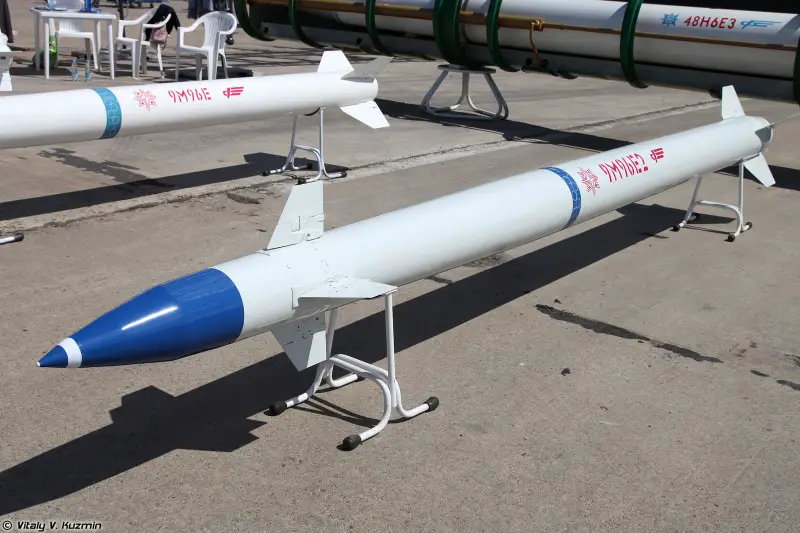
The 9M96E2 SAM with ARLGSN can be used by the S-350, S-400 air defense systems and the Poliment-Redut ship-based air defense system.
On the other hand, the long-range KR and kamikaze UAVs used by Ukraine are in some ways more complex, but at the same time, in some ways easier to hit targets.
On the one hand, they have a low radar and thermal signature, move at low altitudes, and cruise missiles also travel at fairly high speeds; on the other hand, their maneuverability is limited, they cannot jam and make sharp maneuvers to evade an attack in the same way as this can be done by a manned combat aircraft, and the speed of a kamikaze UAV is often less than the speed of a good car (however, in some cases this can be an advantage).
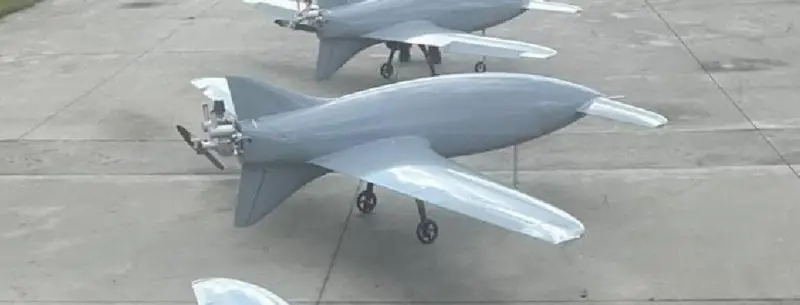
Ukrainian long-range kamikaze UAV "Beaver"
The use of manned combat aircraft to combat low-flying airborne attack aircraft is also not ineffective. While this still makes sense to repel a massive attack by cruise missiles, shooting down dozens, and in the future hundreds (within one raid) of cheap low-speed kamikaze UAVs with the help of expensive air-to-air missiles is not entirely rational.
As for cannon weapons, they are ineffective against cruise missiles, and in relation to low-speed kamikaze UAVs, let us remember the Ukrainian MiG-29, which knocked itself out with the debris of the Russian Geran UAV it shot down.
In addition, the time spent on duty and the operational efficiency of manned combat aircraft are limited by the endurance of the crew, and all this is superimposed on the resource consumption of expensive combat vehicles.
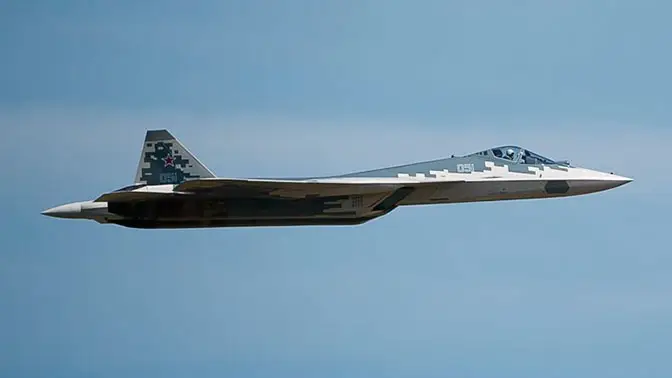
It’s not the job of the Su-57 and others like it to chase after every little thing. Image from the Russian Ministry of Defense
It can be assumed that the optimal solution would be a combination of Helios-RLD UAVs, which provide primary detection of air defense systems, and air defense UAVs, which carry out additional search and destruction of air defense systems.
The conventional Sirius-Air Defense UAV can be considered as such a hunter UAV. It is necessary to immediately make a reservation that if the Helios-RLD UAV is a real development, then the Sirius-Air Defense UAV is just a concept; such a modification of the Sirius UAV does not yet exist, at least according to open data.
UAV "Sirius-Air Defense"
As we already said in the previous article, at the moment the Sirius UAV has already made its first flight, apparently, it is being tested and preparing for mass production.
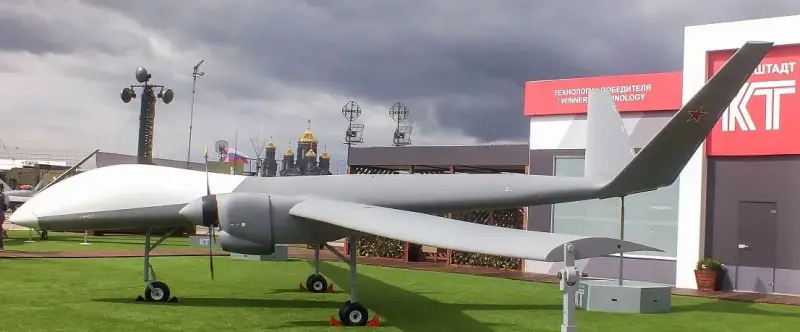
UAV "Sirius". Image overclockers.ru, Zelikman blog
How suitable is this vehicle for use in hunting enemy airborne weapons?
In terms of the duration of its stay in the air, which is somewhere on the order of a day, the Sirius UAV should be comparable to the Helios-RLD UAV. He doesn’t particularly need high altitude and flight speed - he will have to act primarily against low-flying airborne missiles.
An optical-electronic station (OES), including a thermal imager, should be used as a means of further searching for explosive weapons and targeting weapons at them. The possibility of installing a small-sized radar station (radar) cannot be ruled out - their joint work with the EPS will increase the likelihood and speed of detecting enemy airborne weapons.
In addition, by analogy with the possibility discussed for the Helios-RLD UAV in the previous material, the Sirius-Air Defense UAV can be equipped with ultraviolet (UV) radiation sensors to detect radiation from missile launch vehicles and V-V missiles, as well as devices release of protective traps.
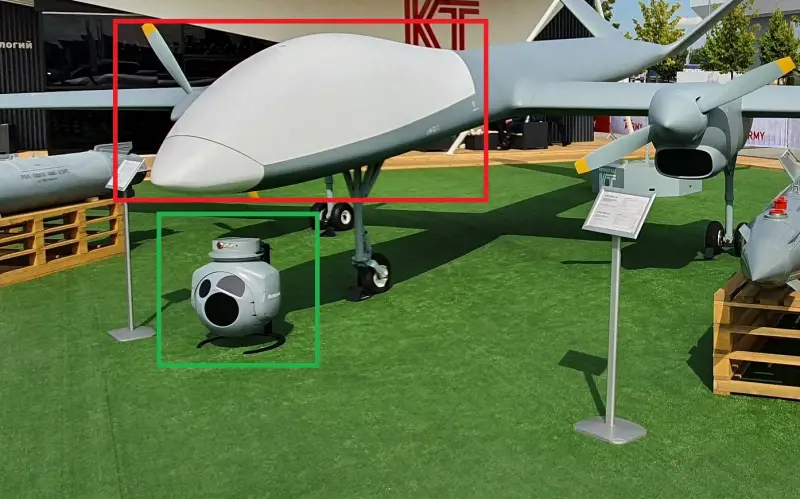
OES of the Sirius UAV (highlighted in green), and the white color of the body (highlighted in red) presumably indicates its radio transparency and the possibility of placing a radar in this place (however, this can also be done to place antennas for communication and control equipment there)
As for weapons, it presumably includes 9K121M Vikhr-M anti-tank guided missiles (ATGMs), capable of hitting low-speed air targets. It can be assumed that the integration of Igla/Verba man-portable anti-aircraft missile systems (MANPADS) with an infrared (IR) seeker into the armament of the Sirius-Air Defense UAV will not become a big problem.
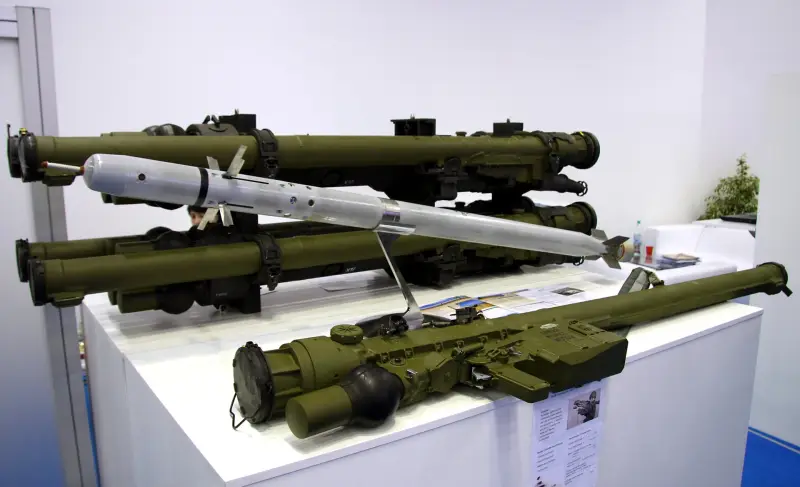
Igla-S MANPADS missile and launcher. Image by Vitaly V. Kuzmin
The possibility of integrating the 9M340 missiles from the Sosna air defense system into the armament of the Sirius-PVO UAV, which are guided by tele-orientation in a laser beam (“laser path”), like the Vikhr-M ATGM. The weight of the 9M340 missile defense system in the transport and launch container (TPC) is about 30–40 kilograms, which, along with the Igla/Verba MANPADS missiles, makes it extremely attractive for placement on a MALE class UAV.
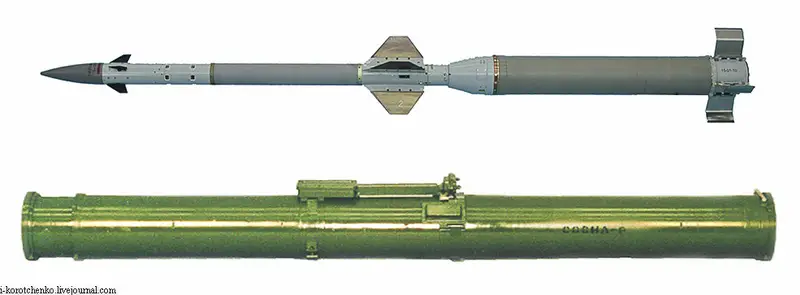
SAM 9M340
Hunting algorithm
After receiving initial information about air targets from the Helios-RLD UAV or other reconnaissance means, the Sirius-Air Defense UAVs must move in the direction of their movement, carry out additional search for airborne targets using their own reconnaissance means and defeat them with existing weapons.
It can be assumed that there will be no problems with slow-moving, poorly maneuvering Ukrainian kamikaze UAVs, but at the same time it will be quite difficult to ensure a high probability of destroying cruise missiles like Storm Shadow. It is possible that the likelihood of destroying modern stealth missiles can be increased by introducing short-range V-V missiles of the R-73/RVV-MD type with an IR seeker into the armament of the Sirius-Air Defense UAV. R-73/RVV-MD missiles are redundant for destroying kamikaze UAVs, but cruise missiles are already quite an adequate target for them.
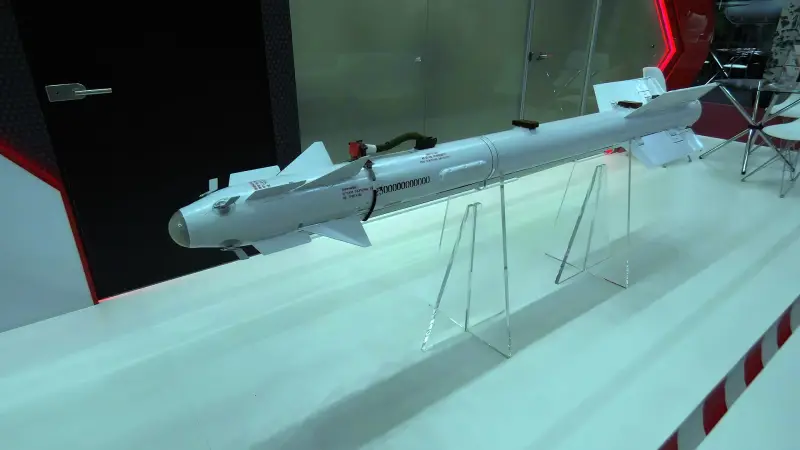
V-V R-73/RVV-MD missile. Image by Kirill Borisenko
It is necessary to understand that even if the effectiveness of the Sirius-Air Defense UAV against cruise missiles is small, then intercepting most of the kamikaze UAVs will be of utmost importance, since it is with their help that the enemy will try to overload the target air defense by launching combined attacks with massive use Kamikaze UAVs and a limited number of cruise missiles in a salvo.
Cruise missiles are expensive, Ukraine itself practically cannot produce them, except for the semi-handicraft production of a limited number of Neptune anti-ship missiles (ASMs) modified against ground targets, Western countries will also not supply missiles in the thousands, but they will purchase kamikaze UAVs and Ukraine can potentially produce tens of thousands of units.
In many ways, the effectiveness of an air defense barrier built from the Helios-RLD UAV and the Sirius-Air Defense UAV will depend on how many of these vehicles will be in service and how many of them can be in the air at the same time. Based on this, the protected air defense zone can be increased both in depth and along the front, increasing the likelihood of damage to air defense systems.
It is necessary to mention one more important point - ground-based air defense systems should not operate in the coverage area of the Helios-RLD UAV and Sirius-PVO UAV, since during intensive combat work, problems with state identification will inevitably arise, as a result of which expensive combat vehicles will die in vain from “friendly fire”. That is, there must be a certain zone for joint combat work of the Helios-RLD UAV and the Sirius-Air Defense UAV, and after this the zone of responsibility of ground-based and ship-based air defense systems should begin.
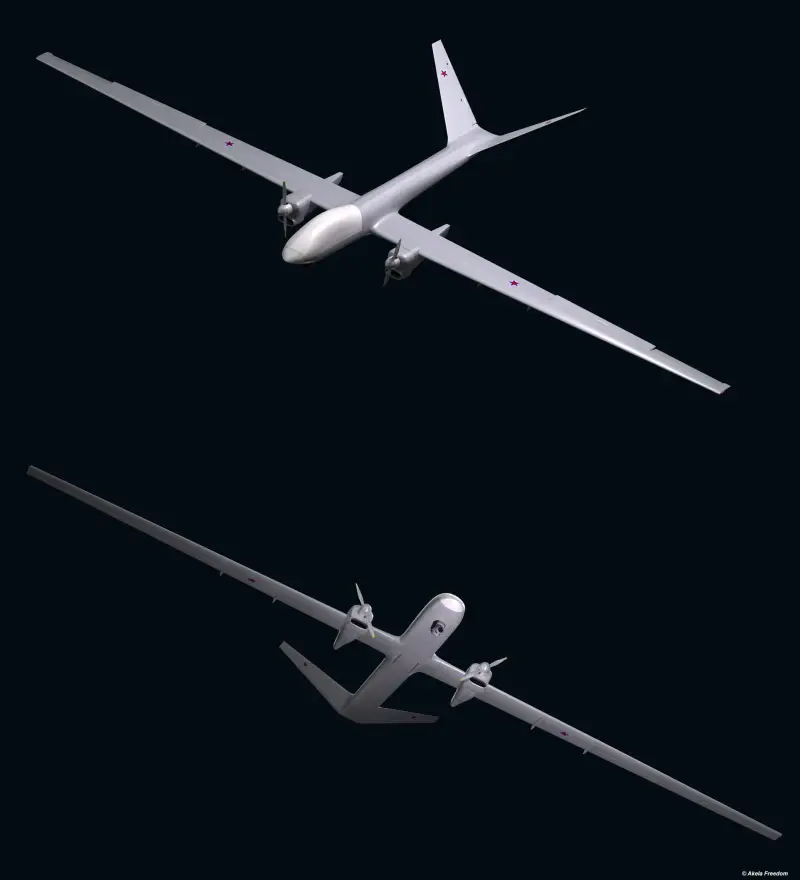
As we have already said in relation to the Helios-RLD UAV, the reconnaissance contour built with their help will be dynamic - the enemy will never be able to know which area is covered better or worse, since due to the movement of the UAV even at an average speed of about 200 kilometers per an hour later, in half an hour or an hour, the configuration of the air defense zone can completely change.
All of the above applies to the reconnaissance and strike circuit, which includes both the Helios-RLD UAV and the Sirius-Air Defense UAV.
Conclusions
As practice shows, UAVs for various purposes will play an increasingly important role in combat operations. At the moment, these machines are not yet used in any way to solve air defense problems, despite the enormous prospects in this area.
The construction on the basis of the Helios-RLD UAV and the Sirius-Air Defense UAV of a reconnaissance and strike contour - a spatially distributed, dynamically changing air defense network that ensures the detection and destruction of air attack weapons, with a depth of tens of kilometers and an extension along the entire line of combat contact, will significantly reduce the effectiveness of enemy attacks carried out using low-flying airborne missiles, primarily kamikaze UAVs.
Potentially, a combination of Helios-RLD UAVs and Sirius-PVO UAVs can also fight more complex targets, such as stealth cruise missiles.
No ground, air or space reconnaissance means will allow the enemy to plan the flight route of low-flying air defense systems bypassing air defense systems, since the network configuration will dynamically change in real time.
Information